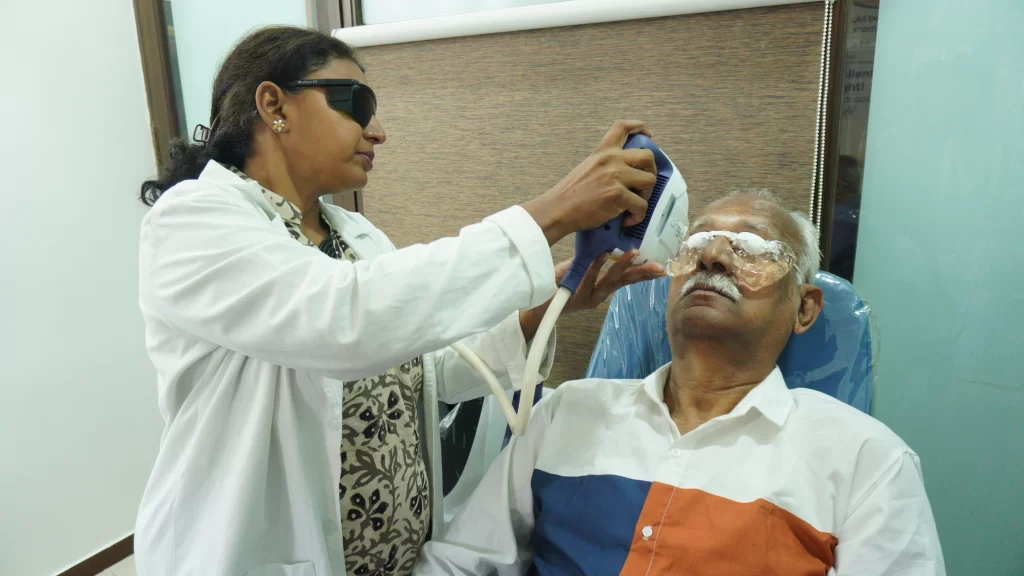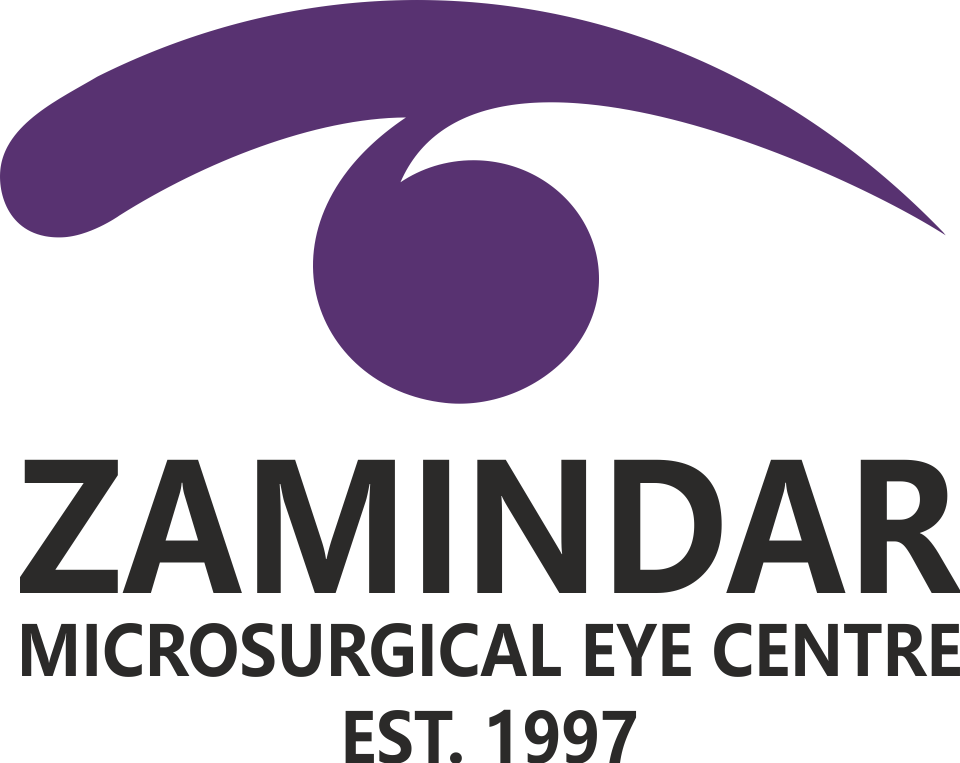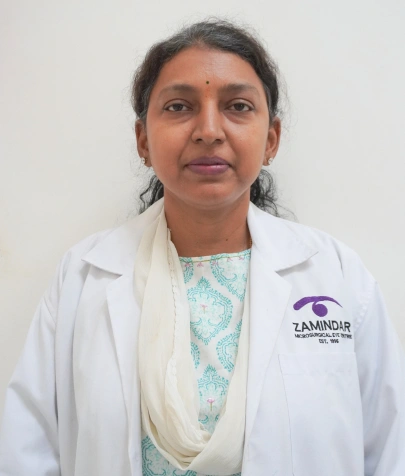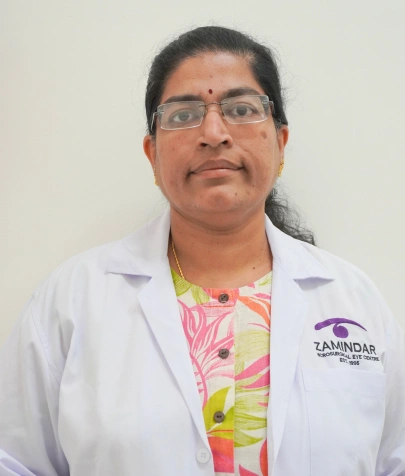Dry Eye Consultation
Relieve Irritation. Restore Comfort. Rediscover Clarity.

Dry Eye Syndrome is more than a passing discomfort; it’s a chronic condition that affects clarity, comfort, and productivity. Whether caused by extended screen time, medication, age-related changes, or environmental triggers, untreated dry eyes can reduce your quality of life and impact long-term eye health.
At Zamindar Microsurgical Eye Centre in Bengaluru, our cornea specialists offer advanced diagnostic tests and personalized therapies; including Dry eye evaluation + Meibography, and IRPL Treatment all under one roof.
Who Should Seek a Dry Eye Consultation?
You should consider a dry eye consultation if you’re experiencing:
- Burning, itching, or gritty sensation in the eyes
- Blurred vision that improves with blinking
- Excessive tearing or light sensitivity
- Dryness after prolonged screen use or reading
- Eye strain due to air-conditioned environments
- Reaction to medications or post-surgical irritation
A timely evaluation can help prevent further damage and restore comfort using targeted, minimally invasive interventions.
What to Expect During Your Consultation
Our dry eye evaluation process is designed to be thorough and efficient:
- Registration & Initial Check-In : Begin with a smooth onboarding where we collect relevant medical history and lifestyle information.
- Patient History Review :Understanding symptoms, occupational exposure, and health background helps customize your assessment.
- Vision Assessment & Refraction : Evaluate visual clarity and identify co-existing refractive issues like astigmatism or presbyopia.
- OSDI Questionnaire :Complete the Ocular Surface Disease Index (OSDI) to document severity, triggers, and impact on daily functioning.
Dry Eye Evaluation
Includes key diagnostic procedures :
- Schirmer Test – Measures tear production
- TBUT (Tear Break-Up Time) – Evaluates tear film stability and evaporation rate
- Slit Lamp Examination – Detailed inspection of cornea, tear meniscus, and conjunctiva
Dilated Eye Examination
Ensures a detailed review of retinal layer and vasculature.
Advanced Imaging & Therapy (If Needed)
- Meibography : Imaging of meibomian glands to detect blockages or gland dropout
- IRPL Treatment (Intense Regulated Pulsed Light) : Offered for moderate to severe dry eye related to Meibomian gland dysfunction and inflammation
Estimated Duration
A typical dry eye consultation takes 60 to 90 minutes, depending on severity IRPL therapy be recommended. Our team ensures a smooth experience with minimal wait time and clear follow-up guidance.
Dry Eye Consultation Specialist

Dr. Soumya Basanth
Cornea Specialist & Comprehensive Ophthalmologist
MBBS, DO, DNB, Fellowship in Cornea
- 12+ years experience
- Doctor Availability: 9:30 AM to 12:30 PM
- Bangalore
- English, Hindi, Kannada
Consultation Fee ₹700
FAQs - Frequently Asked Questions
What is dry eye disease?
Dry eye disease occurs when your eyes do not produce enough tears, or when the tears evaporate too quickly. This leads to irritation, redness, a gritty feeling, or even blurry vision.
How long does the evaluation take?
It can take 15 to 30 minutes, depending on the tests performed.
What treatments are available after the evaluation?
Based on your diagnosis, treatments may include:
→ Artificial tears or lubricating drops
→ Warm compresses and lid hygiene
→ Prescription eye drops (like cyclosporine or lifitegrast)
→ Punctal plugs (to reduce tear drainage)
→ Omega-3 supplements
→ In-office procedures (like LipiFlow, intense pulsed light)
→ Artificial tears or lubricating drops
→ Warm compresses and lid hygiene
→ Prescription eye drops (like cyclosporine or lifitegrast)
→ Punctal plugs (to reduce tear drainage)
→ Omega-3 supplements
→ In-office procedures (like LipiFlow, intense pulsed light)
How does IRPL work for dry eye?
IRPL uses regulated pulses of light delivered just below the eyes to:
→ Stimulate the Meibomian glands
→ Improve the quality of meibum (oil) secretion
→ Reduce inflammation and bacterial load
→ Close abnormal blood vessels (telangiectasia) that contribute to inflammation
→ Stimulate the Meibomian glands
→ Improve the quality of meibum (oil) secretion
→ Reduce inflammation and bacterial load
→ Close abnormal blood vessels (telangiectasia) that contribute to inflammation
Are there any side effects or risks?
IRPL is generally safe and well-tolerated, but potential (rare) side effects include:
→ Temporary redness or swelling
→ Mild discomfort
→ Skin pigmentation changes (very rare)
→ Temporary redness or swelling
→ Mild discomfort
→ Skin pigmentation changes (very rare)
Ready to See Clearly ?
Take the first step towards better vision. Book your consultation today and
discover how we can help improve your quality of life.













